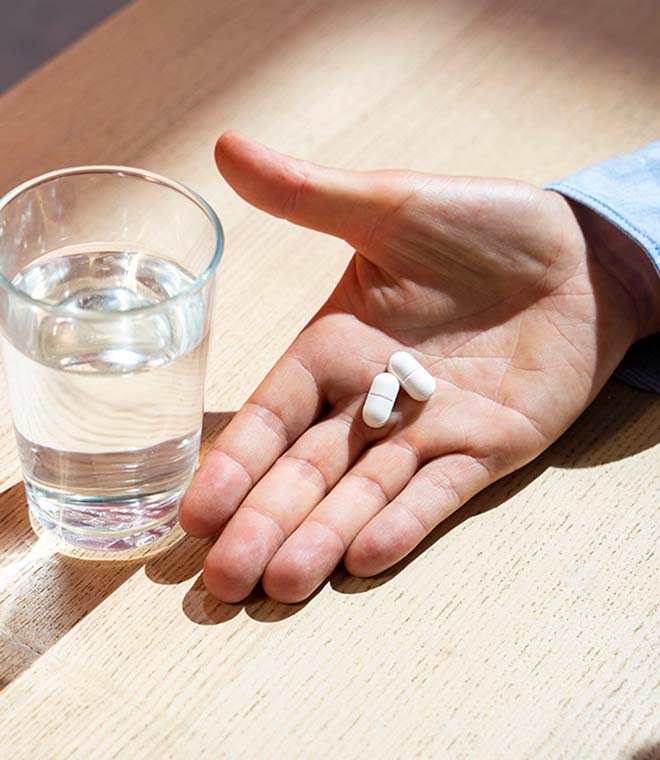Health
Take the pain out of arthritis
Updated by Jean Cherry, RN Jun 22, 2022 • 4 min
Arthritis is inflammation of one or more joints where two bones meet. While there are more than 100 different types of arthritis, osteoarthritis is the most common form and the leading cause of disability in the U.S. Other types of arthritis include rheumatoid arthritis and psoriatic arthritis. Nearly 15% of the U.S. population is affected by osteoarthritis, and over half of those affected are under the age of 65.
What is osteoarthritis?
Osteoarthritis (OA) is a chronic breakdown of joint cartilage, which causes bones to rub against each other. Cartilage is the "shock-absorber" that cushions the ends of the bones, allowing easy movement of joints. Osteoarthritis most commonly occurs in the weight-bearing joints of the hips, knees and lower back. It can be diagnosed by your healthcare provider based on a combination of medical history, physical examination and X-ray. OA causes joint pain and tenderness, loss of range of motion in the joint, stiffness and disability.
What are the risk factors for osteoarthritis?
While many believe OA is a normal result of aging, it's also caused by wear and tear on a joint through certain occupations and sports, as well as trauma or injury. Jobs requiring prolonged lifting, kneeling or squatting place people at risk for OA. Sports that involve a direct impact on the joint, twisting and throwing also increase the risk. Genetics play a role in increasing the risk of OA as well.
Can osteoarthritis be prevented?
Obesity is one of the most important preventable risk factors for osteoarthritis of the knee, hip and hand. Some research suggests that for every 10 pounds of weight gain, there is about a 36% increase in risk for developing OA. Weight loss can help reduce the risk of knee osteoarthritis for those who are obese.
How is osteoarthritis treated?
Lifestyle interventions for mild osteoarthritis include exercise and, if applicable, weight loss. Regular exercise helps with pain relief and joint protection by increasing overall movement. Your healthcare provider may refer you to a physical therapist to receive an exercise program based on your mobility, impairment and preferences. Water exercises, such as swimming, are especially helpful. Applying heat and cold to affected areas may also be beneficial.
Assistive devices can help you open jars, reach for items, sit down and get up from a chair or toilet seat. Your healthcare provider may also recommend using canes, walkers and/or braces.
What medications are used to treat osteoarthritis?
Over-the-counter (OTC) pain relievers can help relieve symptoms of osteoarthritis. The American College of Rheumatology recommends nonsteroidal anti-inflammatory drugs (NSAIDs), such as ibuprofen or naproxen. Your healthcare provider may also recommend prescription NSAIDs. Ask your doctor or pharmacist how to take NSAIDs safely.
Applying topical skin creams containing capsaicin (Zostrix) or NSAIDs to affected joints can help with pain relief. These topical products appear to be a better option for people with gastrointestinal sensitivities.
Your doctor may inject corticosteroids into the joint. Artificial joint fluid injections may be beneficial for the treatment of knee osteoarthritis. However, when symptoms are severe or there's a significant loss of function, your provider may recommend joint replacement surgery or other types of surgery to repair damaged joints.
Clinically reviewed and updated by Nora Laberee, May 2022.
Sources:
1. https://www.arthritis.org/getmedia/e1256607-fa87-4593-aa8a-8db4f291072a/2019-abtn-final-march-2019.pdf
2. https://www.uptodate.com/contents/management-of-knee-osteoarthritis
3. ttps://www.arthritis.org/living-with-arthritis/pain-management/understanding/types-of-pain.php
4. https://www.arthritis.org/health-wellness/healthy-living/managing-pain/joint-protection/self-help-arthritis-devices
5. https://www.mayoclinic.org/drugs-supplements/capsaicin-topical-route/description/drg-20062561
6. https://www.uptodate.com/contents/overview-of-the-management-of-osteoarthritis



